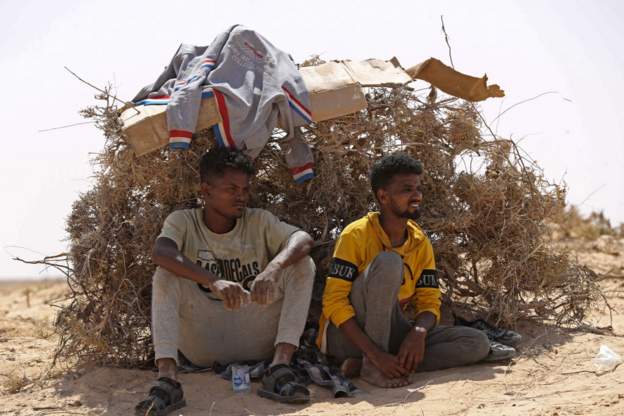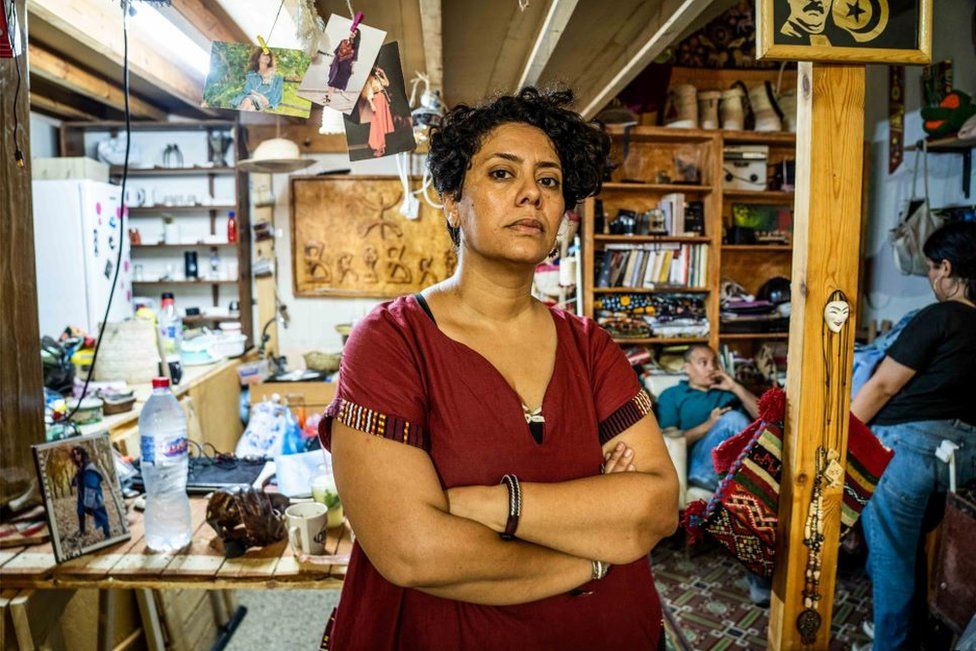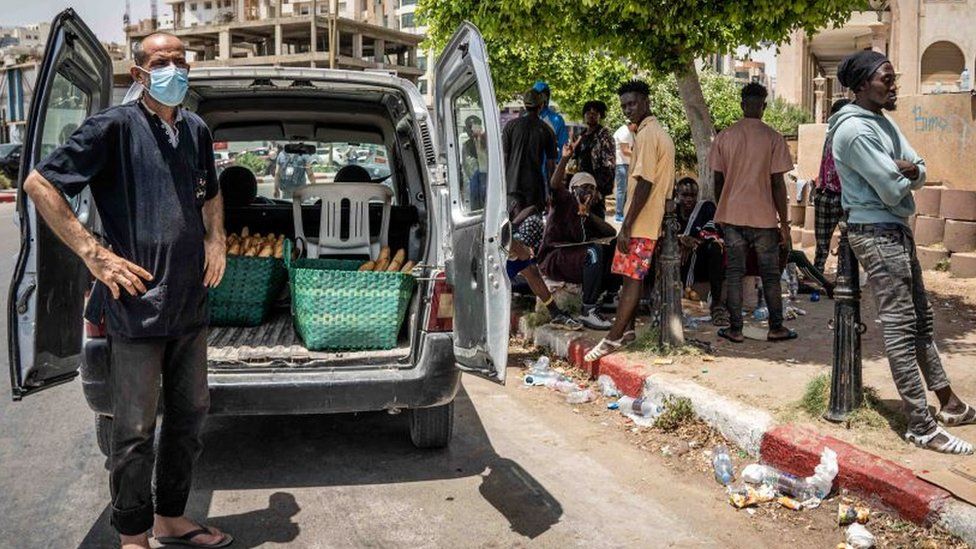25- July-2023- News Agencies

The bodies of five sub-Saharan Africans have been discovered by Libyan authorities in a militarised buffer zone between the country’s border with Tunisia.
The discovery comes after weeks of mass expulsions of black Africans by the Tunisian government.
The policy followed violent clashes between migrants and residents in Tunisia’s second city of Sfax – a main departure point for people trying to cross the Mediterranean illegally to Europe.
Rights groups say hundreds of black Africans – some of whom have legal status in Tunisia – were bussed to the remote desert buffer zone and abandoned without food or water.
But there was no doubt that hostility to these migrants remained.
Videos of the attack have been widely shared. One shows a masked perpetrator screaming that “black Africans are a threat to us and our women” and then inciting people to assault the migrants.
In another, a man shouts: “We must kick all these migrants out. We don’t want them living here.”

In order to understand why this city had erupted into such violence, we spent the night with the hundreds of migrants, sleeping on the concrete.
Dozens were carrying visible injuries which they told us were from the attacks of 4 July. One woman, suffering heat stroke, lay nearly unconscious.
A total of 25 people, including children, needed treatment in hospital on the night of the attack. One migrant says his seven-year-old brother, who had both his legs broken, was among them.
Footage from that night shows a presence of police, but a seeming lack of intervention by them.
Despite numerous requests for comment, the police would not speak to us.
However, the very next morning, the authorities did respond, by forcibly removing more than 100 migrants from the city and driving them to the Tunisian-Libyan border.

A further 1,000 have since been removed from the city and taken to both the Libyan and Algerian borders, local Tunisian officials have been quoted as saying.
Videos filmed by the migrants at the Tunisian-Libyan border and sent to campaign group Human Rights Watch (HRW) show several people with open wounds and deep lacerations.
“There was a wave of racist videos on social media. I was seeing such disgusting posts. So I was already worried such an upsurge of anger could only result in violence.”
She blames President Saied too. Earlier this year he made highly inflammatory comments, alleging that “hordes of sub-Saharan African migrants” were bringing “violence and crime” into the country.

“What was shocking was finding myself in the minority, defending basic principles against violence and racism,” says Ms Bribri
One specific Facebook account, criticised for promoting the violence in Sfax last week, was Sayeb-Etrottoir, meaning “Clear the Pavements”.
Just days before the attacks, the page posted materials advocating that Sfax must be “saved” from the migrants.
The group’s administrator and prominent influencer, Zied Mallouli, vehemently rejects claims that the posts fuelled violence.
Enduring sweltering temperatures, and with very little shade on the streets, they are entirely dependent on hand-outs from local residents.

“I saw that these people were hungry and sleeping in the open,” says one local resident. “So with my friends, we decided to make sandwiches. Yesterday we also brought water and yogurt. All for free, in God’s grace.”
Another, a taxi driver, says he and his wife have begun to host one mother and daughter after last week’s attacks.
“I feel sorry for the migrants and my city. So I decided to host a family. I provide them with shelter and the food my wife cooks,” he adds. “The Tunisian authorities should offer them all legal status.”
In the current climate, the chances of that happening seem close to impossible.
Stuck in limbo, neither the authorities, nor the migrants seem to be any closer to a solution – or a final destination

